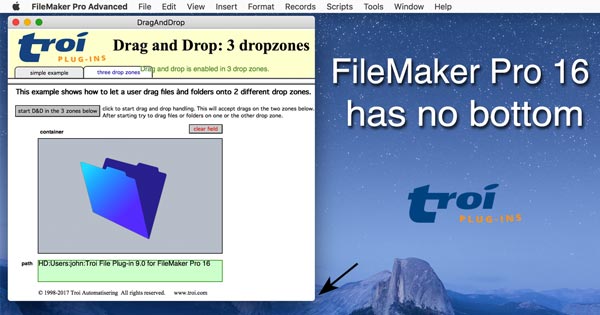
Continue Reading

A giant step
Congratulations to FileMaker, Inc. on the release today of version 16 of the platform.
Continue Reading


Congratulations to FileMaker, Inc. on the release today of version 16 of the platform.
Continue Reading